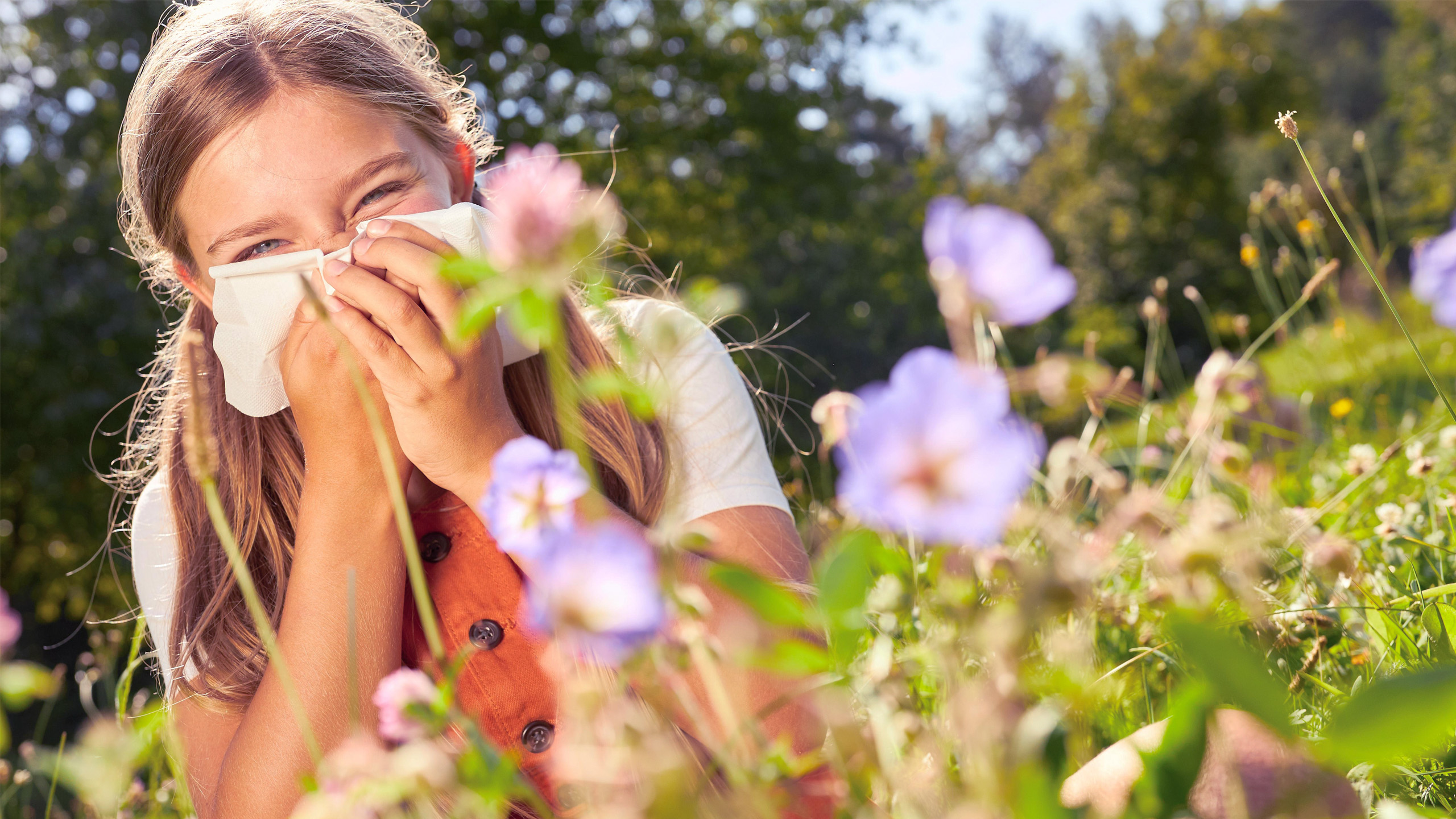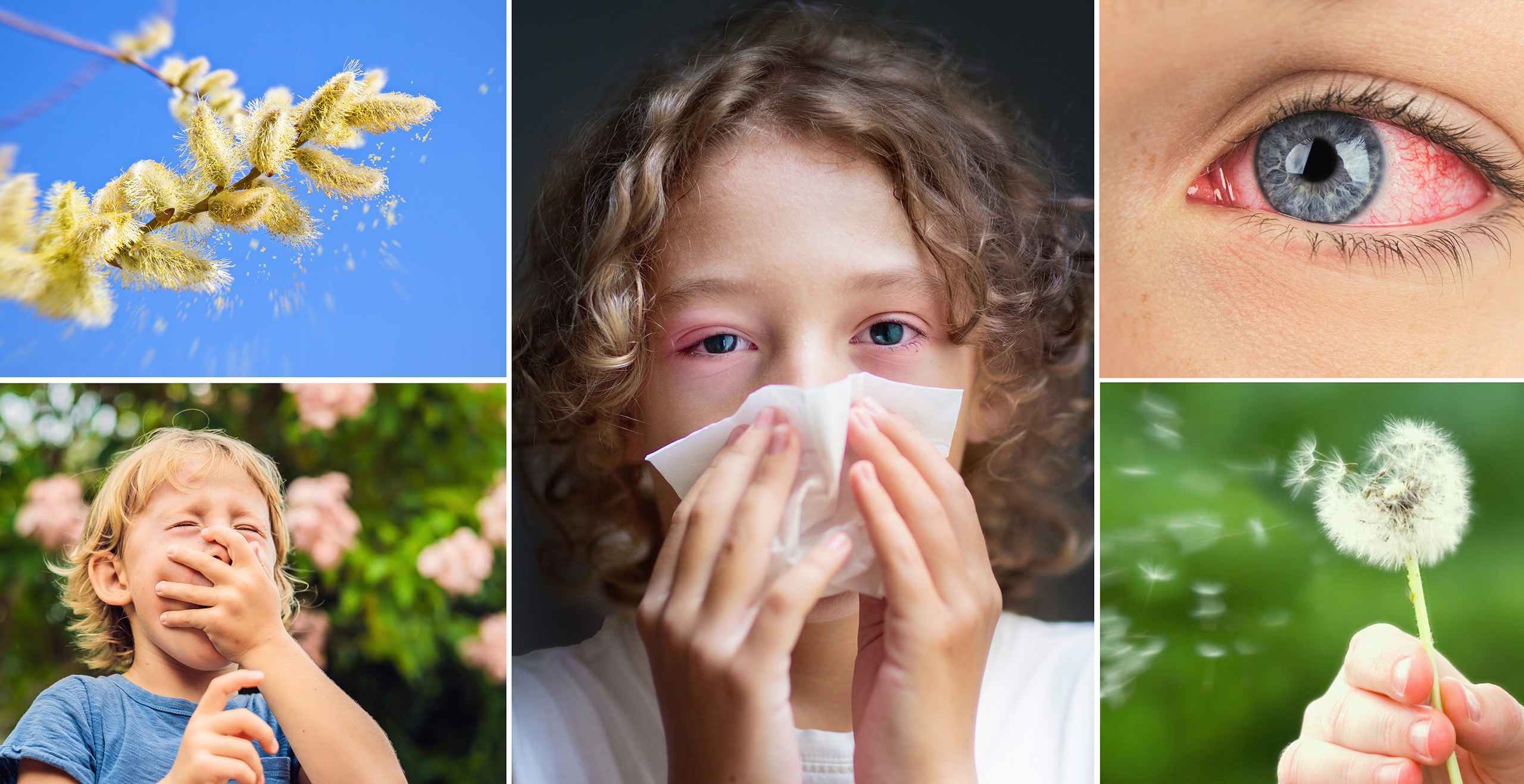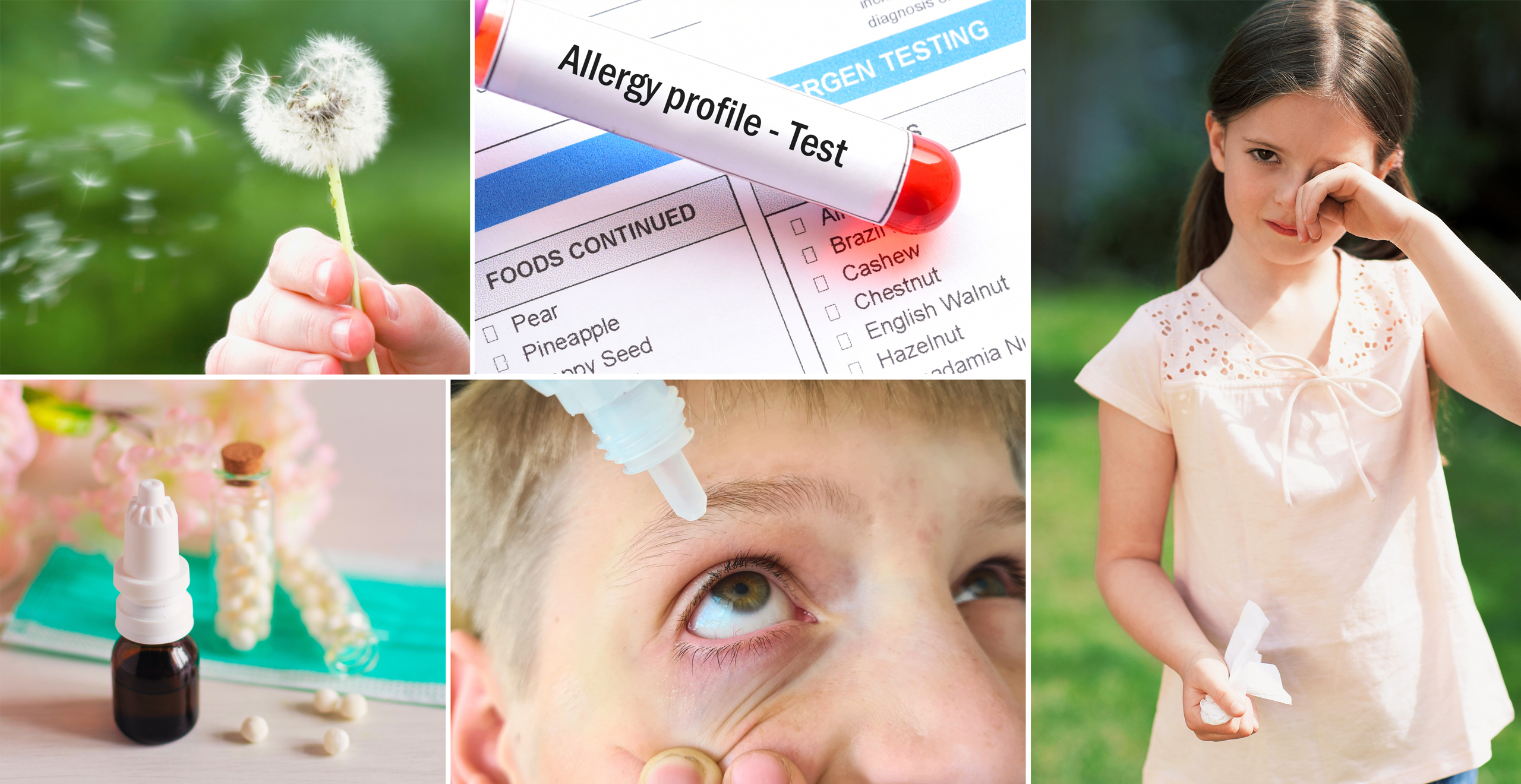SPRING GUIDE: Children’s OCULAR Allergies

How to tackle children’s OCULAR ALLERGIES and ensure them a spring season (and not only) without discomfort!
⏱️ 02:35 READING TIME
Spring brings an explosion of colors and the joy of fresh air, but for children with eye allergies, it can also mean discomfort and irritation. This is a critical time of year when many children experience the annoying symptoms of eye allergies for the first time. About two out of ten children suffer from allergic reactions during spring and summer, often accompanied by conjunctivitis and eye inflammations.
Symptoms to Keep an Eye On
Ocular allergies in children can manifest with a range of symptoms that can be really bothersome. Here are the most common signs:
1. Itchy Eyes. Children tend to rub their eyes frequently due to intense itching, often worsening the situation.
2. Redness. Eyes may appear visibly red and irritated, usually due to inflammation caused by the allergen on the conjunctiva.
3. Excessive tearing or ocular secretions. Children with ocular allergies may have watery eyes or clear secretions (different, however, from those typical of infections).
4. Burning in the eyes.
5. Swelling of the eyelidsle. Occurs due to inflammation and irritation and due to unconditioned rubbing of hands on the eyes.
6. Photophobia – increased sensitivity to light that can be perceived in bright environments.
7. Blurred vision caused by tearing or irritation..
8. Congestion and nasal symptoms
Often, ocular allergies in children are accompanied by nasal symptoms such as sneezing, congestion, or itching in the nose, as the upper airways are connected to the eyes, also disturbing sleep and making the child even more restless.

Insights into Ocular Allergies Causes
Ocular allergies in children occur when their immune system overreacts to normally harmless substances, mistakenly identifying them as threats. This can be due to hypersensitivity of the immune system or genetic predisposition.
The Keyword: Prevention
If the child presents these symptoms, it is important to consult a pediatrician or an allergist for an accurate diagnosis and appropriate treatment. In the meantime, there are some measures that can be taken to prevent the onset of allergic discomfort.
Among the most important are: correct identification of the responsible allergens, consultation with a specialized doctor such as a pediatrician or allergist for appropriate treatments, reduction of exposure to allergens by keeping windows closed during periods of high pollen concentration, and teaching children to wash their hands frequently. It’s also crucial to maintain good eye hygiene and avoid external triggering factors during pollen peaks.
How to Reduce Ocular Allergies Symptoms
Before administering medication or invasive products, it’s essential to consult with the pediatrician or allergist who will provide precise instructions on which product to use and how. In the meantime, we can encourage young children in their behaviors (not to rub their eyes, not to go out at certain times, to wash their face often, etc.)
So when they are outdoors, let’s have them wear sunglasses that can protect them not only from harmful rays but also from excessive light that could cause a worsening of eye redness in case of allergies. Always carry with us artificial tears able to bring immediate relief to the eyes of children and teenagers and specific moist wipes for the correct hygiene of the eyes.
Upon returning home, we suggest a shower and a change of clothes to avoid bringing any allergens into clean areas.
Protecting our children’s eyes from allergies is essential to ensure them clear vision and safe contact with the world around them. As Helen Keller, the prodigious deaf-blind American writer and activist said, ‘Sight is the sense that communicates most with the outer world, and it is through it that the outer world communicates with us.’ With correct knowledge and attention, we can make spring a season of joy rather than concern for our children.
